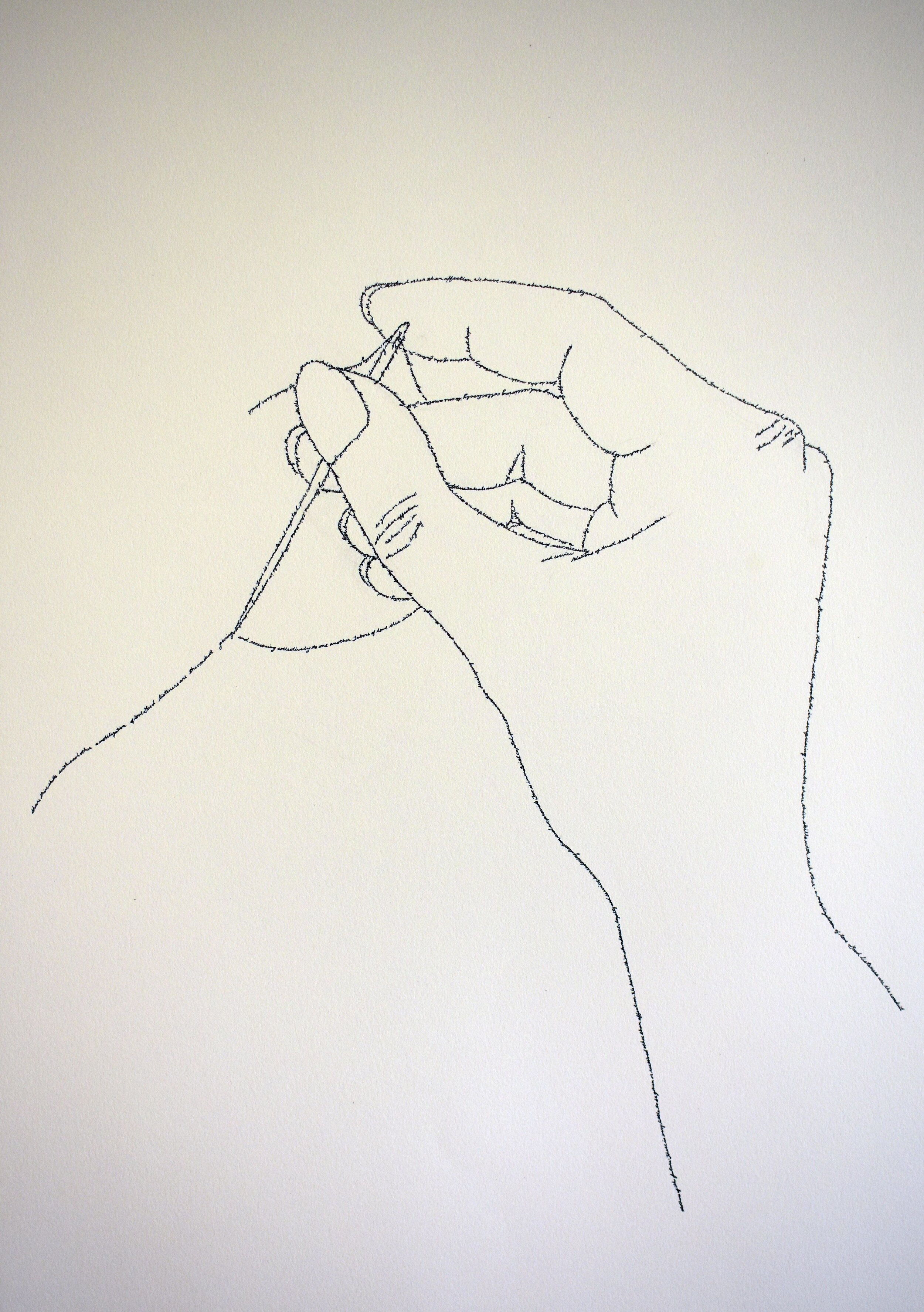Exploring Materiality
William T. Carson b. 1992, Sheridan, WY Lives/Works: Santa Fe, NM “Way Down in the Mine,” 2019 Coal, mica, on wood panel; Courtesy of the Artist
Rachel Epp Buller b. 1974, Lincoln, NE Lives/Works: Newton, KS “Letters to the Future,” 2018 ink-word-drawing on paper; Courtesy of the Artist
In the 1960’s, when postmodern and conceptual art were growing in popularity, critic and historian Lucy Lippard wrote that the object in art was becoming “wholly obsolete.” In her essay The Dematerialization in Art (co-authored by John Chandler) Lippard argues that the movement of art from material to ideas creates the post-aesthetic, or anti-aesthetic, where the visual reading of the art becomes unnecessary and the idea of art, or “art as art,” becomes the finished product. But where the viewer can not intrinsically see the idea, we can immediately understand the medium. The object often serves as an entry point, allowing the viewer to develop a more personal relationship with the artwork. Process is often tied to the materials. The process of making is physical (or we assume it to be physical), and craftsmanship confers pride and meaning into an object.
What is the role of the object in contemporary art? What meaning does the medium manifest? The first gallery in the Salina Biennial turns its focus on the materiality of art, exploring these questions and others. The artists included have proven that material and craftsmanship are indeed alive and well, but they also unravel the various meanings and ideas inherent in their chosen medium.
William T. Carson’s work is a great example of how materials can harbor innate meaning. Carson works in coal, specifically from a mine near family land in Montana, drawing on his own personal relationship with the medium. His tactile compositions highlight the particular material properties of coal, yet it is impossible to avoid the cultural values and meanings embedded in the object. The viewer will bring their own ideas and personal experiences to Carson’s work, but there is no escaping coal’s current contested political role. Although it is not the artists intent to make a political statement, instead he is providing a space for larger conversation, bringing different political ideas together through common experiences and materials.
Many of the artists in this gallery are employing traditional or utilitarian mediums, often written out of the art historical cannon as mere craft. Alicia Kelly explores paper cutting in a wholly contemporary practice. Kimberly Ivancovich exploits the functionality of cement, a material that is synonymous with modern architecture, while removing any vestige of permanency. Trisha Coates and Stephanie Lanter both approach ceramics through processes demanding a high level of craftsmanship, but result in works that are far from functional and push our preconceived ideas about what ceramic objects are.
Rachel Epp Buller and Geraldine Craig draw on traditional materials as well, highlighting implicit biases about materials particularly in the sphere of traditional women’s work. Both artists use traditional handicrafts like stitching and weaving to create their work, which draws on our assumptions about domesticity, while using those mediums to explore connections across space and time.
In addition to traditional materials we see an exploration of new ones, including tissue paper, old computer keyboards, and found objects. As Ksenya Gurshtein writes in her essay, these artists defy expectations and push the boundaries about what contemporary art is and how it is created.
I invite you to continue the exploration of materiality and art with the following readings and videos:
The Dematerialization in Art, by Lucy Lippard and John Chandler, 1968
The Medium is the Massage, by Marshall McLuhan, 1967
Video: Summary of The Medium is the Massage
An Illustrated Guide to Arthur Danto’s “The End of Art”, by Tiernan Morgan and Lauren Purje, Hyperallergic, 2015
Video: Materiality and Meaning, Warren Seeling
The Nature and Art of Workmanship, by John Pye, 1968
The Medium is the Massage, The Nature and Art of Workmanship, and a catalog for Lippard’s exhibition on The Dematerialization of Art are available for purchase online as well.
— Gretchen Boyum, Interim Curator at Salina Art Center


